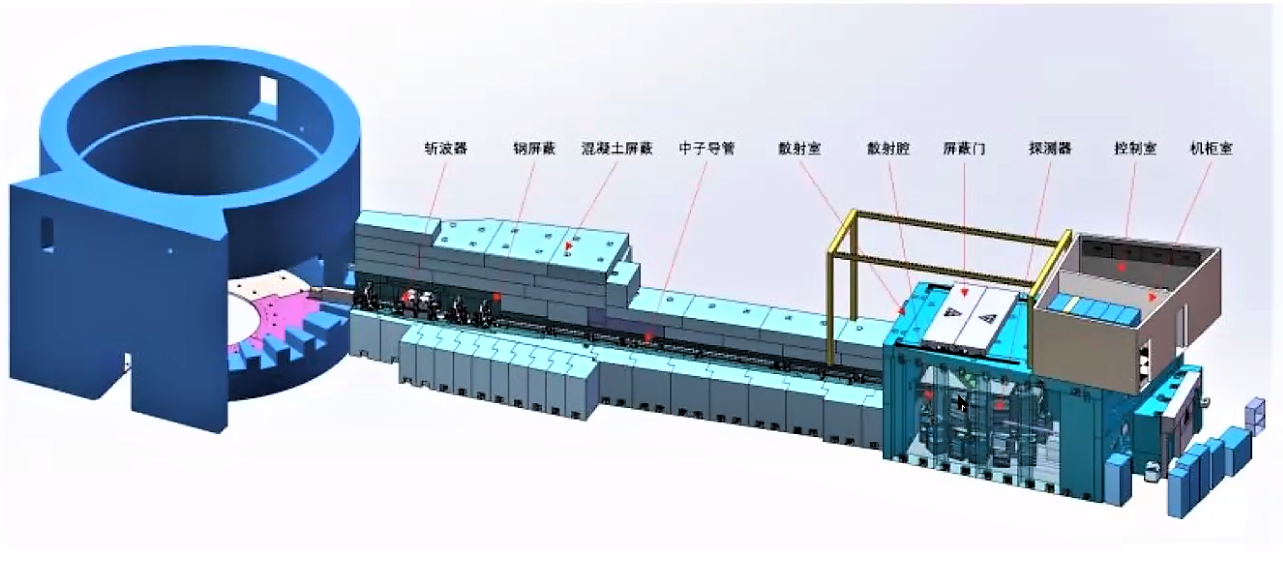Multi Physics Instrument (MPI)

MPI is a time of flight diffractometer optimized for the study of disorder in complex materials through the measurement of the total scattering intensity. With the pair distribution function (PDF) analysis technique, users will be able to use MPI to determine the local structures from atomic to nano scales. MPI will have broad-range of applications covering physics, chemistry, materials science and engineering, and life sciences.
As a total scattering instrument, MPI has several unique design features. The key design parameters are summarized below.
- Beam line No.16
- Moderator: Decoupled Water
- Sample to moderator: 30 M
- Sample to detector: 1~3 M
- Accessible Q (momentum transfer) range: up to 50 Å-1
- Q Resolution: ΔQ/Q ~ 0.3%
- High-pressure 3He detectors
- Flux on sample: ~107 n/s/cm2
- Time resolution: ~ 2-5 min / data set
The construction of MPI is a partnership between Dongguan University of Technology (DUT), CSNS and City University of Hong Kong. The MPI was commissioned on January 26, 2021. It becomes the fourth instrument of CSNS. The RGC - Collaborative Research Fund provides additional detectors for MPI, essentially doubling the detector coverage and hence the performance of the instrument.
Installation of MPI
The installation of MPI was completed. Related photos are as follows.


